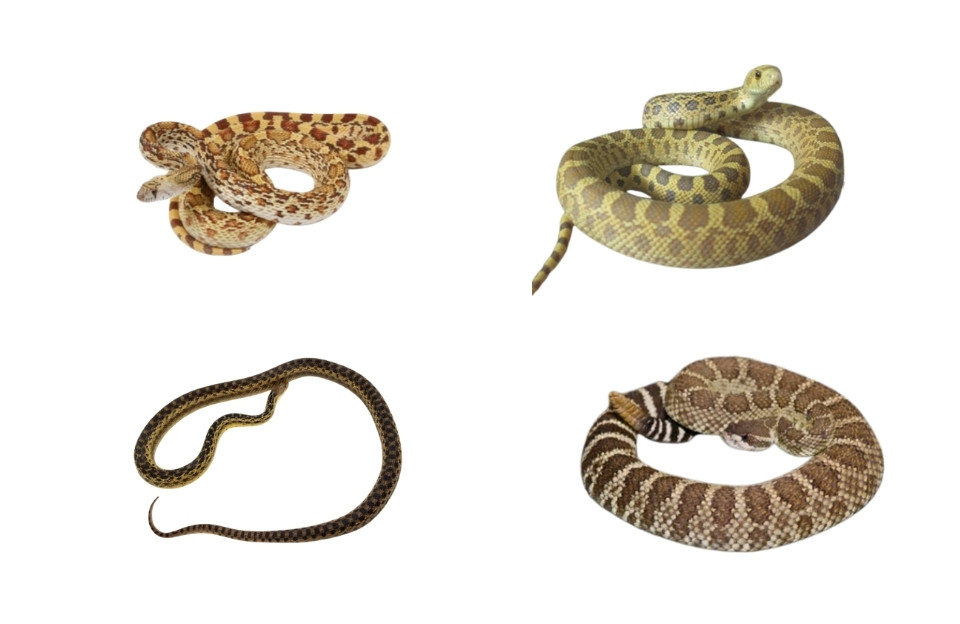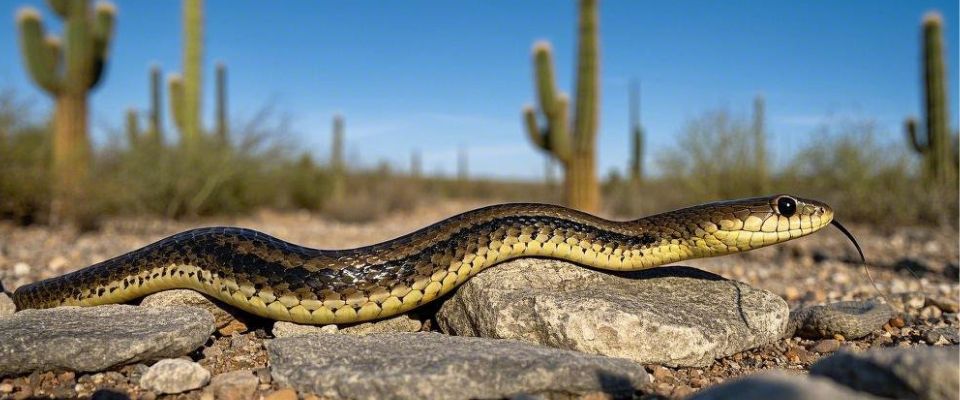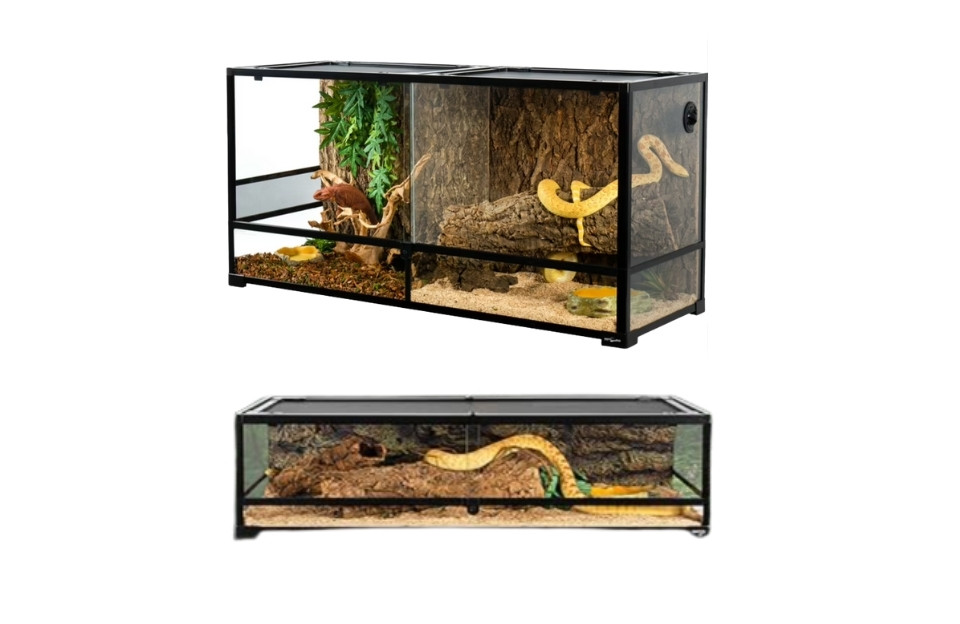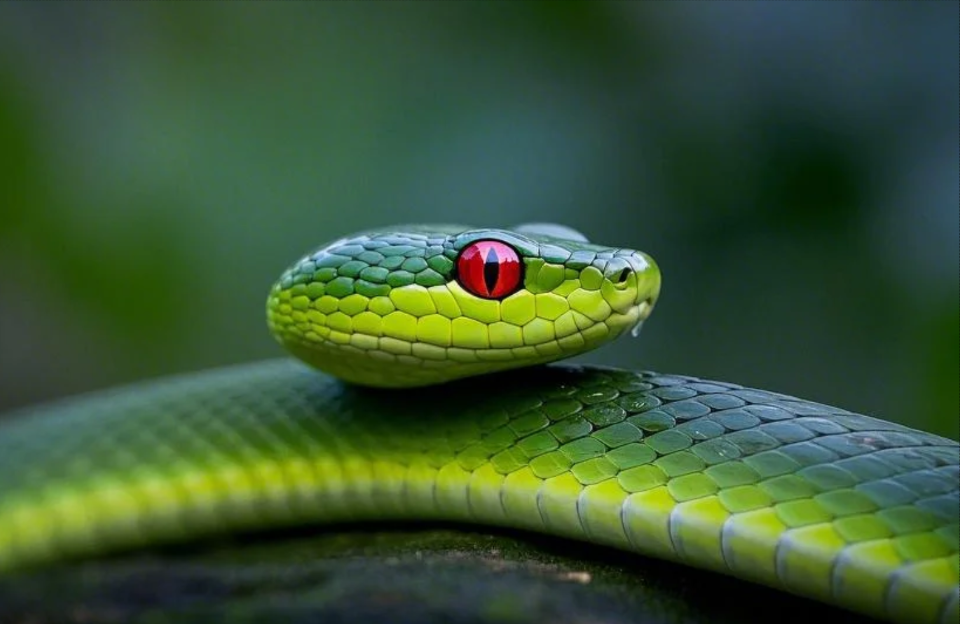Last Updated on February 19, 2025 by Falcone Dulce
The natural habitat of these striking nonvenomous gopher snakes is North America. Due to their rare appearance and temperament, they have increasingly become a common choice of pet.
A Brief Introduction

Gopher snakes are reptiles, and their popularity is sought after as more young people look for unique pets. They are suitable pets for novice and seasoned reptile enthusiasts. As the average length of gopher snakes is somewhere between 4-6 feet, they are quite easy to handle and care for.This friendly demeanour is one of the reasons people keep gopher snakes as pets. Despite their versatility in different environments, they do require a warm and humid setting that most resembles their natural habitat. Feeding on mice, gopher snakes are known to be superb advanced-level hunters that are capable of amazing feats. Additionally, their colour variation makes them unique and unlike other snake species, hence their fame. Their average lifespan is between 15 to 20 years, but with good care and attention, they can even reach up to 33 years.
Appearance Features

A gopher snake is unique and easily distinguished by striking body design features. Patterns of gopher snake coloration usually feature a blend of light yellow or tan bodies which is complemented by dark stripes or patterns. The body’s colour and patterns also serve the purpose of beauty and aid in hiding within the surrounding environment. They also have broad heads with large prominent eyes which allow them to see very well while they hunt. They have smooth and glossy scales, which makes them look healthy. This species of adult snake is large in size with muscles well developed for hunting and survival. They also have long tails that are primarily used for support and balance while climbing.
Ecological Habits
With broad ecological habits, gopher snakes can mainly be found in dry grasslands, sand dunes, and the borders of forests. They are diurnal creatures that spend their days searching for food and soaking up the sun to regulate body temperature. They use an ambush hunting technique with agility and lifting camouflage to stalk small animals, birds, and reptiles that they eat. Gopher snakes are proficient crawlers, swimmers, diggers, and hiders; they also can climb trees which enables them to move freely through various types of environments. In the breeding season, they participate in courtship, during which females lay 5 to 20 eggs that grow into fully formed baby snakes. Gopher snakes play an important ecological role as they control the population of rodents and thus help maintain ecological balance.
Behavioral characteristics
Gopher snakes show numerous behavioural adaptations. These snakes are non-aggressive, and their demeanour is gentle; instead of striking, they defend themselves through avoidance and hiding. In case of an attack, they tend to show their bulk by curling, which can discourage some predators. If cornered, they would need to raise their head while hissing or pretending to be another aggressive snake. They are very calm and wait a long time before striking at their quarry, which reveals how they hunt. In addition, they are territorial and will mark new parts of their surroundings with their tongues as they survey these changes. This way, it is possible to hunt while staying out of reach of danger. In general, these behavioural characteristics allow for the maximum amount of flexibility in dealing with different challenges in a natural environment.
Ecological Role
Gopher snakes have significant influence on ecosystem balance due to their duality as a predator and prey. Additionally, they contribute to the cyclic interdependence within the ecosystem’s food chain, being feeders for larger birds and carnivorous animals. The constant balance would be disrupted if one species is removed. Their existence sustains biodiversity and enhances the overall wellbeing of the ecosystem. In addition, due to the mobility of snakes, the soil gets aerated, and more seeds have the possibility of growing, therefore improving the health of ecosystems.
Human-Gopher Snake Relationships
The relationship between humans and gopher snakes is multifaceted and diverse. For one, gopher snakes are advantageous to agricultural settings as they help control pest and small rodent populations, effectively working to protect crops. Gopher snakes are common pets and display animals among reptile enthusiasts because of their docile temperament and beautiful colors.
Sadly, however, they’re also threatened by human activity. Over time the native habitats have been gradually lost due to habitat destruction, agricultural development, and urbanization. Unfounded myths and phobias concerning snakes (in specific localities) also result in needless killings, which lessen their population numbering. Education and conservation programs are pivotal in improving human perceptions of snakes. These activities help people understand the role of these organisms in the ecosystem, raising awareness and encouraging coexistence. Saving the snakes and their ecosystems not only helps the environment, but also contributes to biodiversity conservation
Gopher Snake Care Basics

Understanding how to care for a gopher snake is really an important backgrounder if you decide to keep them as pet. First, you require an excellent residence for them. A 20-gallon tank is ideal for baby gopher snakes. Owning an adult snake? At the very least, you should be getting yourself a 40-gallon tank, approximately 120 cm long, 60 cm wide, and 45 cm high. This provides them with plenty of space to maneuver.
At home, offer hiding spaces and things to climb on, because gopher snakes are curious. Branches and rocks can be used to make it interesting to them. They enjoy humidity, so you may need to check the humidity levels if your home is particularly dry. Mist them regularly because they especially need the humidity when they’re shedding. Using a substrate such as coconut coir or aspen shavings can assist in retaining moisture.
Regular cleaning of the gopher snake’s enclosure is essential for their health. Because of this, the tank should be checked daily to remove uneaten food and waste (as well as soiled substrate) to maintain a clean environment. Perform the partial cleaning every one or two weeks replacing part of the substrate and cleaning any surfaces where waste or residues may have accumulated. Also, do a full cleaning every one to two months. That includes taking everything out of the tank, cleaning the enclosure with a safe reptile cleaner or vinegar-water solution, rinsing it thoroughly and letting it dry before replacing everything.
Don’t forget to wash your hand before and after handling your snake or if you will clean the tank. When refreshing the substrate or decor, remember to check the humidity and temperature in the enclosure afterward, as these can vary. Keeping your gopher snake clean and healthy by following these cleaning tips will ensure that you have a comfortable home.
Regular visits to the vet are also recommended, particularly if you’re a new snake owner. Observing how they eat and act will enable you to identify any health issues early on. It’s also helpful to learn signs of stress or illness, so that you can act quickly if necessary.
Lastly, consider joining local reptile clubs or online groups to keep in touch with other interested gopher snake enthusiasts. These communities can be really good for support and tips. With a bit of time and effort in their care, you’ll spend many joyful years pairing with your gopher snake.
Fun Facts & Trivia
The gopher snake possesses fun facts and other notable features. They are non-venomous; yet, they can scare off potential threats by mimicking the behaviours of more aggressive snakes. It is this form of camouflage that sustains gopher snakes in their environment. Additionally, they are known to be constrictors, which is to say that they subdue their prey by tightly coiling around it.
In many cultures, gopher snakes symbolise adaptability, flexibility, and intelligence. Possessing the ability to thrive in a myriad of situations and use unorthodox techniques to hunt, these snakes are sometimes depicted as the personification of strategy and intelligence. For a few Native American tribes, these snakes serve as guardians.
- Gopher snakes are revered by several Native American tribes as protectors of the land and agriculture, aiding in pest management and crop protection.
- The Hopi people believe snakes have holy qualities, and gopher snakes represent the cycle of life and natural balance.
- Navajo mythology associates snakes with land and water sources, with gopher snakes serving as protectors during ceremonies to represent abundance and peace.
The meanings linked with gopher snakes generally center on the following factors:
- Adaptability: They can thrive in a variety of environments, demonstrating their adaptability and flexibility.
- Wisdom and Strategy: They use camouflage and ambush hunting to highlight the value of strategic thinking.
- Protection and Balance:They protect and balance the ecology.
Gopher snakes also possess unique hunting habits, as they are able to move their tongues flexibly to hunt for molecules in the air. Furthermore, the gopher snake’s body can autonomously modulate its activity levels in response to variations in environmental conditions, such as higher temperatures. Additionally, with warm weather and ideal habitats, gopher snakes are able to outlive a decade. For these reasons, gopher snakes are increasingly common among reptile enthusiasts. All of these pieces of information put together declare the gopher snake’s distinctive position in nature.
Final Thoughts
In tandem with other traits, the gopher snake’s striking beauty adds to the list of reasons why it is a common pet; however, the importance of this gopher snake goes far beyond. The gopher snake is also of great assistance in suppressing rodent populations, further diversifying nature. With the rapid change in climate and widespread human activity destroying nature, there is great need to alter the perception and understanding of gopher snakes through education and conservation policies. Doing so would allow the gopher snake to thrive freely while simultaneously allowing us to enjoy their beauty as pets.

